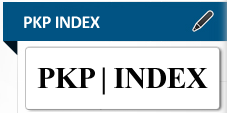Prakiraan bahaya letusan Gunung Api Ijen Jawa Timur
Abstract
ABSTRAK
Gunung Ijen di ujung timur Pulau Jawa, merupakan salah satu gunung api yang mempunyai danau kawah di puncaknya dengan ukuran kawah 600x900 m, Ijen menjadi salah satu objek wisata menarik di Jawa Timur. Selain pemandangan yang indah, kawah Ijen menjanjikan belerang yang berlimpah. Tak heran kalau Kawah Ijen selalu ramai dikunjungi wisatawan dan para penambang belerang. Seperti gunung api lainnya Ijen juga sewaktu-waktu dapat menimbulkan bahaya bagi para pengunjung dan masyarakat yang tinggal di sekitar Gunung Ijen. Oleh karena itu, untuk mencegah dan mengurangi risiko yang mungkin terjadi, diperlukan mitigasi bencana melalui prakiraan bahaya gunung api berupa kajian ilmiah untuk mengetahui karakteristik vulkanisme gunung api tersebut. Kajian ini didasarkan pada sifat alamiah gunung api melalui telaahan data geologi, geofi sika, dan geokimia serta data terkait lainnya secara komprehensif dan terintegrasi. Telaahan data tersebut diharapkan dapat memberikan gambaran karakteristik erupsi gunung Ijen sebagai acuan dalam menentukan jenis potensi ancaman bahayanya. Berdasarkan hasil analisis produk erupsi Gunung Ijen pada masa lampau dan interpretasi sejarah geologi, Gunung Ijen sering meletus hebat. Oleh karena itu, perlu diantisipasi bila gunung api tersebut meletus kembali. Disamping volume air danau kawah yang cukup besar dan sangat asam, juga kemungkinan dapat terjadi awan panas bercampur air danau yang tumpah memasuki sungai-sungai yang berhulu di danau kawah. Bila ini terjadi maka akan menjadi lahar letusan yang lebih berbahaya karena selain panas juga bersifat asam. Kuatnya alterasi di daerah lereng bagian atas dan dinding sekitar kawah dapat menyebabkan kegagalan lereng (sector failure) maka bila terjadi erupsi besar dapat memicu terjadinya longsoran puing vulkanik (“volcanic debris avalanche”).
Kata kunci: Prakiraan, Bahaya Letusan, Ijen, Jawa Timur
ABSTRACT
Mt. Ijen in the eastern tip of Java Island, is a volcano that has a crater lake on its summit. Its crater lake which is about 600 X 900 m in size, Ijen becomes an interesting tourists attraction in East Java. Apart from having a beautiful scenery, Ijen crater produces promissing abundant of sulphur deposits. No wonder that the crater of Ijen is always crowded by tourists and sulphur miners. As well as other volcanoes, may at any time can cause hazards to the visitors and the people who live around the volcano. Th erefore, to prevent and reduce the risks that may occur, a mitigation effort through a volcanic hazard assessment in the form of scientific study to determine the characteristics of volcanism of the volcano is required. This study is based on the nature of the volcano through an integrated research of geological, geophysical, geochemical and other relevant data comprehensively. The data study is hoped can ilustrate the characteristics of Ijen eruption as a reference in determining the kind of potential hazard threat. Based on analysis results of previous eruption products of Ijen volcano and interpretation of its geologic history, this volcano erupted frequently. Therefore, future eruption of this volcano should be anticipated. Apart from the large volume and high acidity of the lake water, the possibility of the occurrence of pyroclastic fl ows mixed up with the lake water spills into the rivers originating from the crater lake may take place. When this matter happens, an eruption lahars may occur and it would be more dangerous because the lahars not only hot but it is also very acid. The strong alteration in the upper slopes and walls around the crater may cause slope failure (sector failure), then if a large eruption occurs it can trigger a volcanic debris avalanche.
Keywords: Hazard assessment, eruption, Ijen, East Java
Full Text:
PDFDOI: http://dx.doi.org/10.34126/jlbg.v3i2.40
Refbacks
- There are currently no refbacks.

This work is licensed under a Creative Commons Attribution-NonCommercial 4.0 International License.









